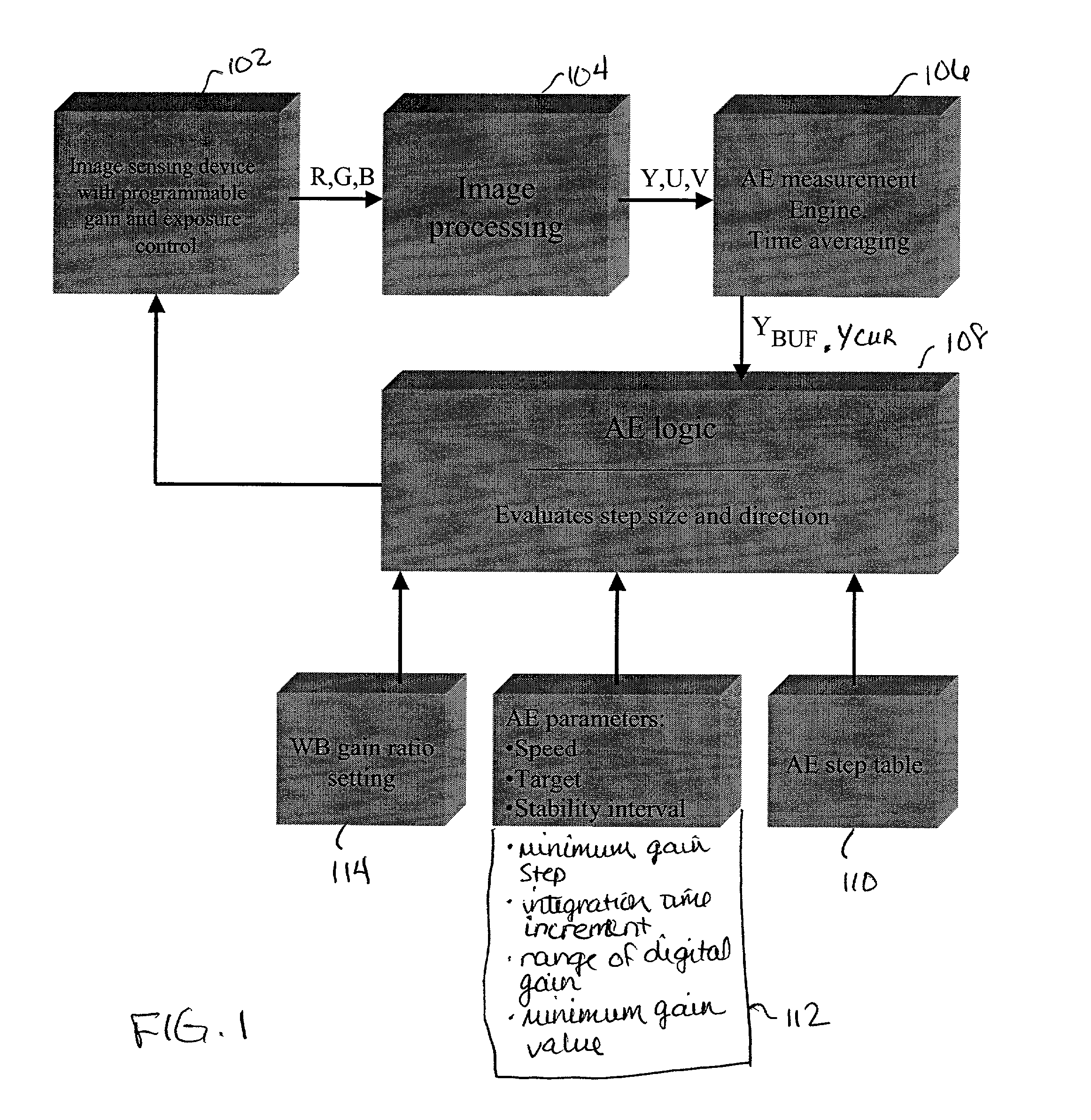Method and apparatus for automatic gain and exposure control for maintaining target image brightness in video imager systems
a video imager and automatic gain technology, applied in the field of automatic gain and exposure control for maintaining target image brightness in video imager systems, can solve the problems of poor image quality and increase signal noise, and achieve the effects of efficient maintenance of target image brightness, maximizing the signal to noise ratio of the image, and simple structur
- Summary
- Abstract
- Description
- Claims
- Application Information
AI Technical Summary
Benefits of technology
Problems solved by technology
Method used
Image
Examples
Embodiment Construction
[0017]In the present invention, auto-exposure is controlled by adjusting both the integration time (exposure) of an image in an image sensor and the gain of the image data in a coordinated manner so that the transition between a current luminance value and a target luminance value is smooth, even and efficient. Since increasing the gain of the image data amplifies the existing data in a received signal, any noise in the original signal is also amplified upon increasing the gain. On the other hand, increasing the integration time of an image affects the luminance value by allowing the image sensor to obtain a more data-rich signal having greater bit depth, which provides more details and tonal range such as shadows and highlights of the image itself. Thus, to increase the signal level of the image obtained by the image sensor, it is preferably to have as large an integration time as is suitable while effecting any further desired increase in signal by increasing and amplifier and dig...
PUM
 Login to View More
Login to View More Abstract
Description
Claims
Application Information
 Login to View More
Login to View More - R&D
- Intellectual Property
- Life Sciences
- Materials
- Tech Scout
- Unparalleled Data Quality
- Higher Quality Content
- 60% Fewer Hallucinations
Browse by: Latest US Patents, China's latest patents, Technical Efficacy Thesaurus, Application Domain, Technology Topic, Popular Technical Reports.
© 2025 PatSnap. All rights reserved.Legal|Privacy policy|Modern Slavery Act Transparency Statement|Sitemap|About US| Contact US: help@patsnap.com



